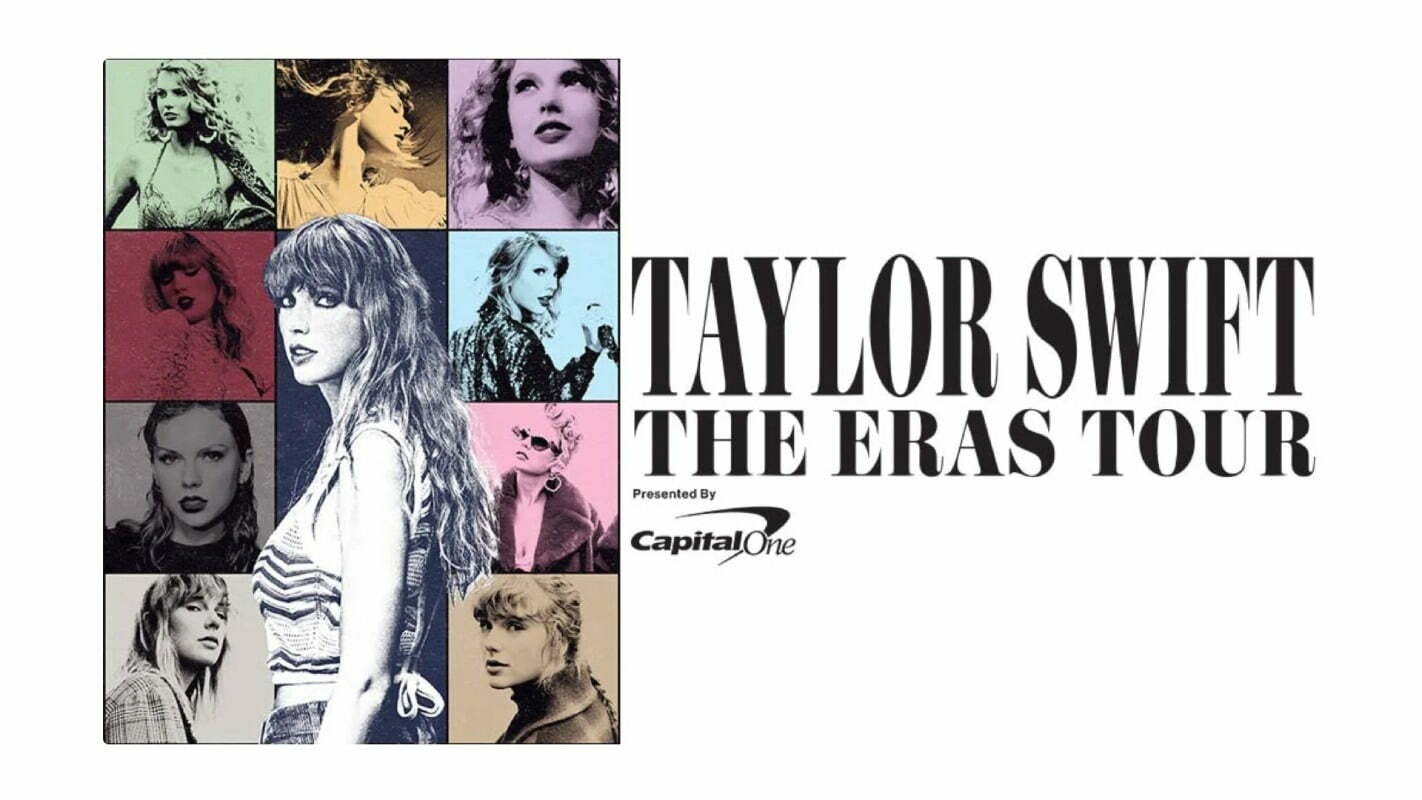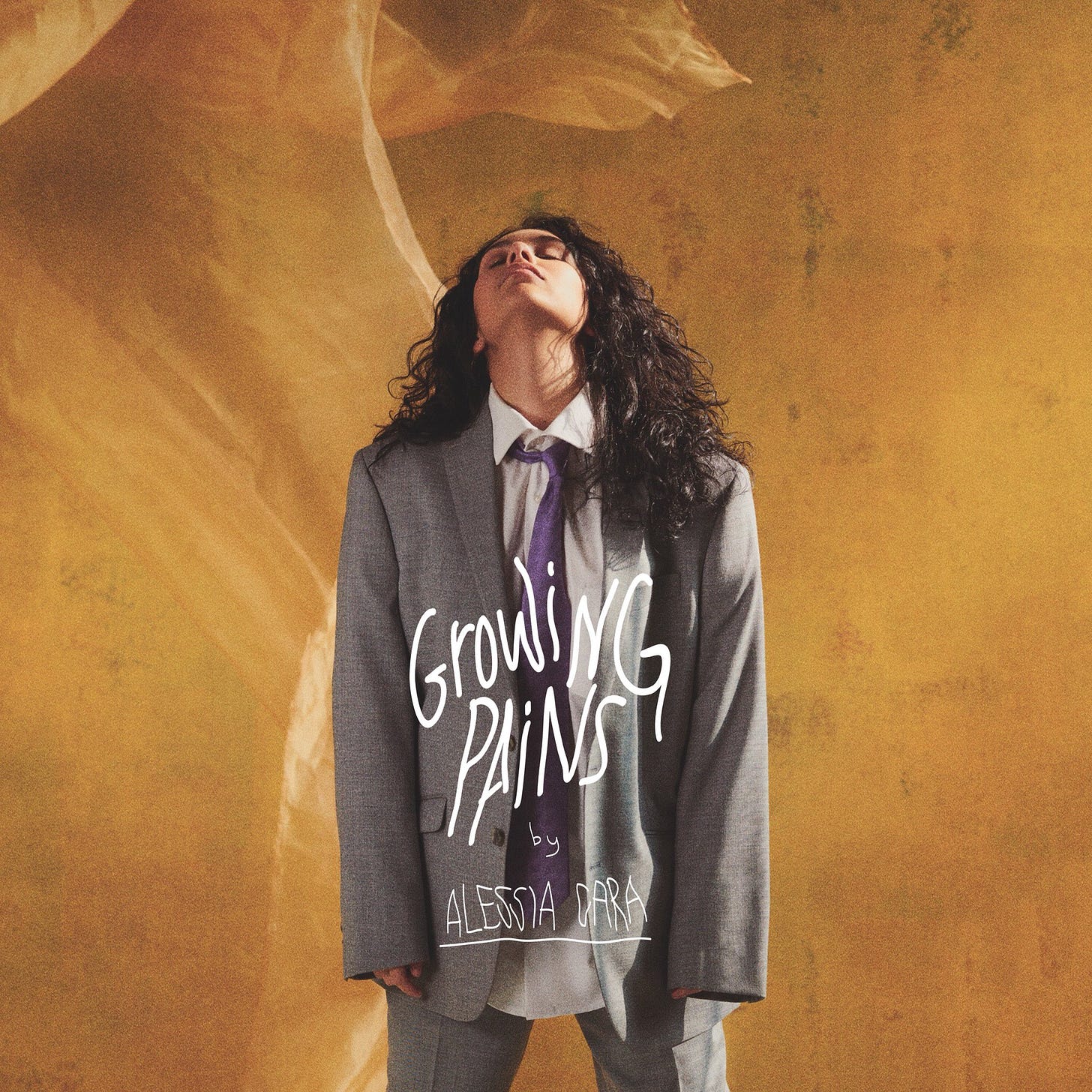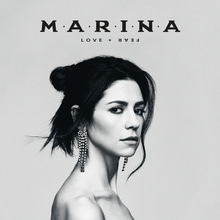Was Radical Optimism a "Flop"?
feat. Love + Fear, Mr. Morale and the Big Steppers, and Happier Than Ever
In its strictest sense, it's used to describe a misfire (whether an album, a song, a film, any audiovisual project) so spectacularly unsuccessful that it loses a ton of money and stains the reputation of those involved. Think of Mariah's Glitter or Katy's Witness (no shade intended; I'm a fan of both of them): those records performed so poorly they actively derailed their careers, if only momentarily in Mariah's case, and had fans questioning whether they could even bounce back with the general public. Those are true, actual flops.
—u/Pavlovs_Stepson, on “What makes a flop a flop?”
On May 3rd, Dua Lipa released her third album Radical Optimism. It wasn’t as good as many people were expecting, and its release was overshadowed by the Great Rap Beef of 2024. This failure to make a splash led many pop fans to label it a flop.
The term flop gets thrown around a lot in pop music circles. Flop has become a buzzword for music that is commercially unsuccessful, critically panned, and/or otherwise bad. But as u/PavlovsStepson explains in the above Reddit comment, flop also has a more specific meaning. And this more specific meaning is what I’d like to explore in this post. What makes something a flop? Are some artists more likely to flop than others? And is Radical Optimism truly deserving of this label?
Under u/Pavlov_Stepson’s definition, an album can only flop if it actively derails an artist’s career. By this logic, some artists are simply “too big to flop”. Taylor Swift is not going to flop in the next few years, no matter how bad her future albums are. This is why I would never call The Tortured Poet’s Department a flop, even though it got some of the worst critical reception of Swift’s career. Taylor Swift can’t flop. She is simply too popular.
But directly relating popularity to flop potential is overly simplistic. Take Witness— a 2017 Katy Perry album that is considered the prototypical flop. Perry was about as big as you can get at the time— for a while her hits were inescapable on the radio. But she still flopped. Why?
Some artists have diehard fanbases that will always come out for them. This is true of certain Main Pop Girls like Taylor Swift, but it is also true of less popular artists who are thus able to punch above their weight. Even though Ed Sheeran is a fair bit more popular than Nicki Minaj, he still has more flop potential due to his more casual fanbase. You could say Sheeran’s fanbase is more fragile. Like Sheeran, Perry had a more fragile fanbase. And so after Witness, her house of cards came tumbling down.
I’m not saying anything crazy here; artists with more dedicated fanbases are obviously going to have more success. But I’d like to raise a deeper question: why do some artists have a more dedicated fanbase? And what can artists do to cultivate that image?
Fanbases as Snowballs
The word “fragile” isn’t super evocative, so I’d like to introduce artist fanbases as snowballs. Just… bear with me for a second. Imagine that you’re rolling a snowball around the yard. Every time you roll it over a patch of snowy ground, you pick up more snow (fans). And thus your snowball (fanbase) becomes bigger.
In this analogy, you can think of albums as patches of snowy ground. More popular albums will have more snow (fans) to collect. But the amount of snow isn’t the only thing that matters— there’s also the type of snow. High-quality and/or distinctive albums will have nice, sturdy, packing snow, while albums that are more of a flash in the pan will have powdery snow that is more likely to flake off. And if a patch is too rocky; well, your snowball might break apart (flop).
This analogy illustrates three ideas. The first idea is that each album creates its own audience. There is always going to be some group of fans out there who got into an artist because of their latest album, no matter how flop-worthy it is. (For example, I got into Duran Duran because of their 2015 album Paper Gods.) The second idea is that flop potential is related to fanbase size, but it is also related to fanbase quality. You might collect a lot of snow, but low-quality snow makes your snowball fragile. And this could lay the groundwork for a future flop. The third idea is that a fanbase needs to be constantly nurtured. Even the biggest of snowballs melt after enough time has passed.
Pop stars face a lot of industry pressure to reinvent themselves. But why? Well, labels want their stars’ snowballs to get as big as possible. If their pop stars keep making similar-sounding music, then they’re going to run out of snow in that part of the yard! A reinvention can be thought of as a patch of ground that is very far away. The further away you go from your starting patch, the fresher the snow! But if it’s too far away, then your existing snowball might break apart before it gets there.
Keeping the Fans Fed
Now you might think a pop star’s main job is to make good albums. This is certainly their primary job as a musician. But as a pop star, their main job is to nurture a fanbase. In the context of snowballs, this would be stuff like pouring freezing water over it, packing it down, and sculpting it into a round shape.
Nurturing a fanbase can take many forms, but it all comes down to making sure that your snowball doesn’t melt or break apart. In pop circles, this is known as “keeping the fans fed”. A skilled pop star has the pulse of the different layers in their fanbase and will regularly drop material to keep each groups of fans happy. While they will continue to gain fans by growing in new directions, they will also gently guide their old fans into their new music, reassuring them that they are not forgotten.
This is why Taylor Swift is the best pop star: her ability to keep her fans fed is simply unmatched. Whether it’s through social media lore drops, album easter eggs, or just the expansive yet accessible life narrative around her art, TS is able to make old and new fans alike feel seen and valued. And her gradual yet steady growth in popularity has allowed her to gradually “pack in” the layers of her fanbase without causing too much friction. Through this lens, her re-recordings seem even more genius. Not only do they allow her to become significantly more wealthy, but they also let her explicitly water every layer of her fanbase. The result is a Swiftie fandom that is loyal, cohesive, and maybe even a bit culty.
While the Swifties are clearly a rock-solid fanbase, not every fanbase is as easy to pin down from the outside. But it is perhaps the single most important quality for a pop artist to have. Because a sturdy fanbase doesn’t just represent an artist’s flop potential (or lack thereof). It also represents their skill as a pop star— and thus how much room they have to grow.1
Sophomore Slumps and One-Hit Wonders
Of course, there is also plenty of luck involved. Ideally artists want to grow steady and sturdy, just like Taylor Swift. But if an artist grows too fast off the back of a popular song, then there’s only so much they can do. This is why we get “one-hit wonders”— how can you nurture your fanbase if you only know that they like your one song?
This also provides an explanation for the sophomore slump: that is, a massively successful first effort followed by an underwhelming second album. (Alessia Cara is one of the more notable examples.) The sophomore slump is less about the album being second and more about it following an album that brought in tons of new snow. Rapid growth creates an unstable snowball, and if an artist lacks an existing fanbase, packing in all those new fans is even harder.
Plus, no matter how good a new album is, fans are likely still going to have the fondest memories of the album that got them into the snowball. It is (by definition) why they started listening to that artist, after all. Because of this, we can expect artists’ most well-liked albums to be not necessarily their most critically acclaimed albums, but their most fanbase-expanding ones.
This is why Red and 1989 are so beloved by Taylor Swift’s fanbase— as her first pop crossover albums, they were able to bring the most new fans into the Swiftie fold. It is unlikely that TS will release an album that iconic again, simply because she’s already exhausted her potential fanbase. The yard is too “empty of snow”, you could say. But who knows? Perhaps TS will roll her snowball to the next yard and drop the biggest rap album of the decade, strengthening her chokehold on popular culture.
Flop or Not? Three Case Studies in Flop Status
This article is getting pretty abstract, so I’d like to discuss three recent examples of reinventions that span the spectrum from “flop” to “not”.
Love + Fear (MARINA, 2019)
Although not as popular now, Marina and the Diamonds (as she was formerly known) used to sit at the core of a sort of “Tumblr music pantheon” alongside contemporaries Lorde and Lana del Rey. She successfully pioneered a distinctive brand of campy, girly, quirky pop that spoke to the digital culture of the moment. Online music mag Tone Deaf claims that Marina and the Diamonds “didn’t add much to pop”, but I think this is unfair. Her debut The Family Jewels in particular has a raw, feminine playfulness to it that isn’t self-conscious about being cringe. The distinct personas, weird voices, and crazy, fun theater kid vibes all made it a unique addition to the pop canon of the 2010s.
So what happened? Well, Marina and the Diamonds felt constrained by her identity as an artist. She wanted to expand beyond campy Tumblr-core and explore a new artistic direction. The result was Love + Fear, an ambitious concept album based on the work of psychologist Elisabeth Kübler-Ross. MARINA’s previous album Froot had also been a reinvention of sorts, but Love + Fear sought to roll the snowball even further away. To drive this point home, she rebranded as simply MARINA, symbolically cutting off the “Diamonds” add-on meant to represent her fans.
The resulting project received mixed reviews2 from critics and fans alike. It was an intimidating double album that lacked any of the quirky MARINA-isms that fans had come to expect. The campy silliness had been replaced by mellow EDM tracks like the inoffensive “Baby”, as well as ones that tried maybe a bit too hard to be woke. Love + Fear wasn’t a commercial disaster, because pop flops primarily hurt the sales of future albums3. But it was so forgettable that its biggest legacy will probably be serving as (stolen?) fuel for better Camila Cabello songs.
I can’t say MARINA wasn’t trying to cook, because she clearly was. You don’t just slap on a convoluted concept like that for nothing. But it’s hard to figure out what “patch of snowy ground” she was going for. I would guess that MARINA misinterpreted her past success as demand for serious social commentary. While social commentary was often present in MARINA’s work, it always came with a side of silly self-awareness. If she wanted people to take her seriously as an armchair philosopher, then she needed to do a lot more work to make that happen.
Because artistic pivots that big need to be distinctive and bold, and she didn’t create a MARINA persona powerful enough to fill the vacuum of Marina and the Diamonds. She never made it to a nice new “patch of snowy ground”, if you will. Compare this to Taylor Swift’s reputation, an album also controversial amongst a core fanbase. “Look What You Made Me Do” may not have been the best song, but it did come in with a bang. “The old Taylor can’t come to the phone right now… cuz she’s dead.”—now that’s how you kick off a new era! And she was rewarded with a big new set of fans, many of whom had never really been into Taylor previously. MARINA’s slow climate change ballad “Handmade Heaven” was a mere whimper in comparison.
Love + Fear didn’t completely wreck MARINA’s career; hell, she even added me as a fan during that era. But if her current numbers are any indication, MARINA has thus far been unable to recapture that past momentum. In a world where her fourth album was a smash hit, MARINA might be in the same league as someone like Lorde. But because of Love + Fear, it seems unlikely that her career is headed in that direction.
And of course, the songs weren’t very good. There’s also that.
VERDICT: FLOP
Mr. Morale and the Big Steppers (Kendrick Lamar, 2022)
The snowball analogy is particularly helpful for discussing Kendrick Lamar. Kendrick isn’t a pop star in the traditional sense, but his career features similar dynamics. Now Kendrick’s latest album Mr. Morale and the Big Steppers was not bad by any means, but the recent diss tracks from J. Cole and Drake imply that many people clearly saw it as a flop. Let’s use the snowball analogy to examine this.
For years, Kendrick cultivated a diehard fanbase who was into his jazzy, high-concept, socially conscious hip hop. He wasn’t the biggest rap artist, but his snow was about as packed as you can get. That all changed after his 2017 album DAMN., which signaled a pretty dramatic shift away from the more experimental bits of Kendrick’s catalog and towards more accessible pop. When radio-friendly hits like “HUMBLE.” climbed the pop charts, he gained legions of new fans who liked his catchy, hard-hitting flow, but didn’t necessarily latch onto his more high-concept poet side.
You can think of DAMN. as a patch of ground that was very snowy and high-quality but pretty far away. Kendrick didn’t really lose fans when he rolled the snowball in that direction because his snowball was so tightly packed (although your average pre-2017 Kendrick fan almost certainly prefers To Pimp a Butterfly or Good Kid, M.A.A.D. City). He continued this trend with Black Panther: The Album (2018), which cemented his status as one of the major pop culture figures of the decade.
But when he rolled his snowball back to more introspective territory (perhaps even more introspective than his earlier work), he didn’t make much of an effort to keep these new fans along for the ride. Mr. Morale was an ambitious and distinctly non-commercial project— a sort of working through trauma in real time. And it notably had no bangers— the closest thing to a radio hit was the weighty “N95”. If you mainly like Kendrick because he’s the guy who made “HUMBLE.”, then you’re probably going to find a song based around a long argument rather off-putting. And so a lot of this more recently-added snow fell off in response— his active fanbase became smaller.
That isn’t because Kendrick is a bad artist, it’s because he isn’t much of a pop star. Kendrick is clearly an artist above all else, as the recent rap beef has made abundantly clear. But Mr. Morale didn’t make quite the splash that DAMN. did back in 2017.
So was Mr. Morale a flop? Well, at least a little bit! Until the recent rap beef, Kendrick Lamar was a much less prominent figure than he was in 2017 and 2018. But it didn’t put a dent in Kendrick’s more hardcore fanbase— if anything it likely deepened the attachment of his fanbase while collecting a few more diehards along the way. And in that respect, Mr. Morale was successful.
VERDICT: ???
Happier Than Ever (Billie Eilish, 2021)
Billie Eilish’s debut album WHEN WE ALL FALL ASLEEP, WHERE DO WE GO? was always going to be a tough act to follow. While Billie had already found success with her EP dont smile at me, WWAFAWDG’s innovative, dark sound catapulted her to new heights. As of this writing, it is still one of the ten most-streamed albums of all time.
Billie was at the top of the world in the pre-pandemic world, even netting a Grammy for her standalone track “everything i wanted”. But amidst a rocky media cycle and lukewarm reception of her singles (particularly “NDA” and “Lost Cause”), many were predicting a dreaded sophomore slump.
There were a few factors that allowed Billie to avoid this fate. First of all, Billie had a much sturdier fanbase than the average new artist. She built her fanbase at lightning speed, developing a solid core by the time she was just 16. But even though she grew quickly, she still managed to build her fanbase gradually. Because she wasn’t thrust into the limelight off of a hit song like a one-hit wonder, Billie was able to ease into her growing pop star status. She cultivated a rather grassroots, SoundCloud-based following through a slow trickle of singles that eventually became don’t smile at me.
The dont smile at me era seamlessly blended into the WWAFAWDWG era, as Billie continued to release similar singles on a similar cadence. You can think of this first era as one crescendo starting with “ocean eyes” in 2016 and culminating with “bad guy” in 2019. Armed with a savvy social media campaign and masterful production from her brother FINNEAS, she was able to ride this wave all the way to the top. While it might have looked like a typical rise to viral fame from the outside, Billie’s fanbase was much more built to last. Even though this sturdy growth all happened before the rollout of Happier Than Ever began, it allowed her to make that future pivot.
Billie’s second savvy play was staging a dramatic aesthetic transformation. She shed her signature baggy, dark, teenager fit for a look that was form-fitting, white, and mature. And she drove it home with a striking Vogue photoshoot. The edgy Zoomer Billie of 2019 was dead; in her place was an artist striving for something more timeless.
Finally, Billie was able to build a bridge between her different sounds. Her intermezzo “everything i wanted” gave her ballad fans something to be excited about in between albums while also introducing the recurring theme of her newfound fame. Early single “Therefore I Am” fed fans of the more hard-hitting tracks on WWAFADWDG, but it also seamlessly blended into newer tracks like “NDA”. And climactic single “Happier Than Ever” was the payoff, a reinvention that was still unmistakably Billie.
The fact that Happier Than Ever is still more popular on Spotify than dont smile at me is a testament to Billie’s skill as a pop star. It’s not just because Happier Than Ever was a good album. It’s because Billie was able to both boldly craft a new sound and bring her old fanbase along for the ride. It’s why I’m so excited for HIT ME HARD AND SOFT, which is dropping this week. Happier Than Ever never really hit me (despite all my praise), but I’m confident Billie can find a way to bring me back into the fold.
VERDICT: NOT
Radical Optimism: Flop or Not?
Now we finally have the tools to answer the ultimate question: was Radical Optimism a flop? One of Radical Optimism’s problems was that it never developed a distinct identity. When I think of Future Nostalgia, many things come to mind: the pandemic, the bassline-driven retro sound, the bright colors. This was an aesthetic deliberately cultivated over the span of several years, and Dua played her part well. But with Radical Optimism, I come up empty. Um… summer? Ocean? That one short-lived YouTube Shorts trend about ghosting people?
And this is her own team’s fault: the rollout of Radical Optimism just lacked direction. “Houdini” started with a lot of momentum, aesthetically resembling “Physical” with its close-up visuals, power poses, and the sweaty crowd. Since “Training Season” built on the “Dua as fitness icon” bit started by the viral “Physical” workout video, there was potential for some sort of bass-y, sweaty continuity. Radical Optimism is a rather provocative title, so there was definitely room for a vision along those lines. And the presence of producer Kevin Parker (Tame Impala) on the album (as well as some of Dua’s rhetoric) raised the possibility of a psychedelic reinvention. But none of these themes came through in the final product. There wasn’t much sweat or psychedelia to be found beyond what we had already heard. If anything, Radical Optimism resembled her debut album Dua Lipa more than any sort of reinvention.
But most importantly, Radical Optimism lacked a hit song. Neither early single did as well as her team hoped, and the final single “Illusion” was a forgettable summer dance track that probably never would have gotten that popular, rap beef or no. Because of this, many fans were quick to label the album a flop. Some went so far as to say that Dua cutting ties with her previous management in order to sign with her father was career suicide. And I get it. If you’re comparing the rollout of Radical Optimism to that of Future Nostalgia, it’s easy to be disappointed.
But this perspective needs to be tempered by some hard facts from outside the insular pop ecosystem. Radical Optimism debuted at #2 on the Billboard 200, which is nothing to sneeze at. And the actual album is… pretty alright! It may not be as good as the Kendrick equivalent, but “These Walls” is a pretty damn good song.
Plus, while it may not have been the best strategy, Dua’s hedging was understandable. Because disappointing your fanbase is terrifying. Sure, there are outliers like Doja Cat who treat their fanbases with contempt, but most artists are under an unimaginable amount of pressure to deliver. MARINA talked about having nightmares about the reception of Love + Fear, which likely disappointed entire millions of people. If your career is on the up-and-up, why risk ruining a good thing?
Perhaps the strongest case against Radical Optimism becoming a flop is that the often-overshadowed Dua Lipa (2017) was an absolutely massive album. It still has more streams than Future Nostalgia and sits at #6 all-time, with more daily streams than even WWAFADWG at the time of writing. So Dua Lipa is no sophomore artist— with two massive albums under her belt, she has a little bit more room to stumble. Like I mentioned before, Radical Optimism probably succeeds most at watering the Dua Lipa layer of her fanbase. So it at least has that going for it!
And Dua has also been pretty successful as selling herself as a general pop culture icon. She was in the Barbie movie, she did really well on SNL, and the general public just really likes her vibe. Her reputation with diehard pop music fans may have been hurt a bit, but these aren’t the people that drive the sort of mainstream success that matters to an artist as huge as Dua Lipa.
So was Radical Optimism a flop? Well, it’s a bit early to say. But by the definitions I’ve set out, I would be shocked if it hurt the momentum of her career in any meaningful way. Radical Optimism may not have carried Dua Lipa’s fanbase to a fresh patch of snow, and it didn’t feed her fanbase as well as it could have. But I still expect Dua to remain in the limelight for several years to come.
—K
Incidentally, this is what really upsets me about Kim Petras’ recent career turn. It wasn’t just that KP was popular— it was that she also had the fanbase to support a rise to fame. Her pivots from Era 1 to Clarity to TURN OFF THE LIGHT were wildly successful, and she had real momentum back then to build upon. Kim Petras may have a much bigger snowball now, but it’s built with low-quality snow.
MARINA fans are glazing the Love + Fear Wikipedia page hard— in what universe does 62/100 on Metacritic and 5.4/10 on AnyDecentMusic represent favorable reviews?
Love + Fear debuted at a respectable #28 on the Billboard 200, but her subsequent Ancient Dreams in a Modern Land debuted at a dismal #92 despite being a generally better album.









Great article! Really enjoyable to read, and I liked the snowball analogy :)
lol im just waiting for TS to drop a rap album